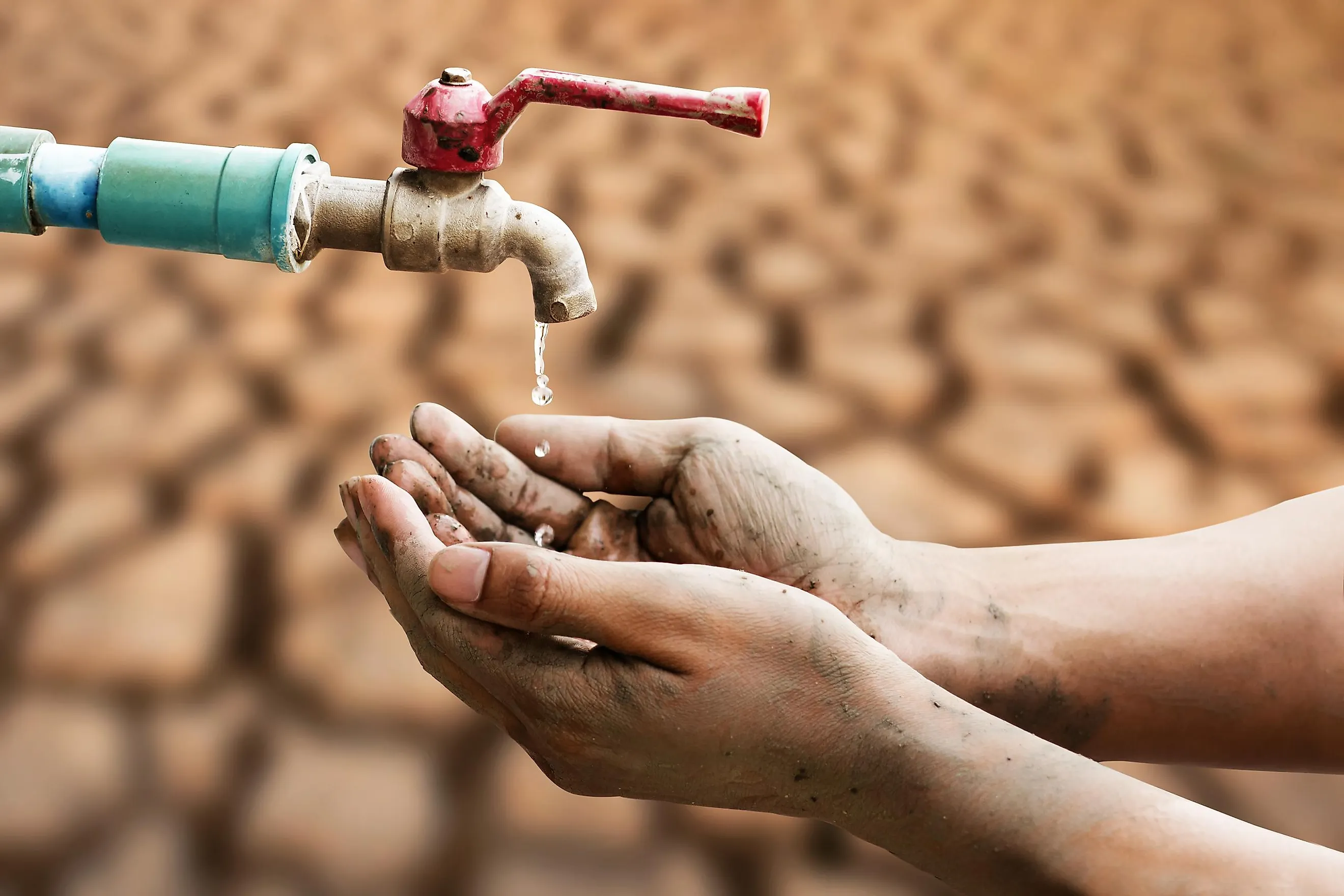
The 10 Most Water-Stressed Countries In The World
In an era of climate change and rising demand for natural resources to meet the needs of growing populations, many countries, especially those in the Middle East and North Africa, face severe water shortages. According to data from World Resources Institute's Aqueduct Water Risk Atlas, based in Washington D.C., these countries are at the highest risk of facing severe water crises in the coming decades.
1. Qatar - 4.97
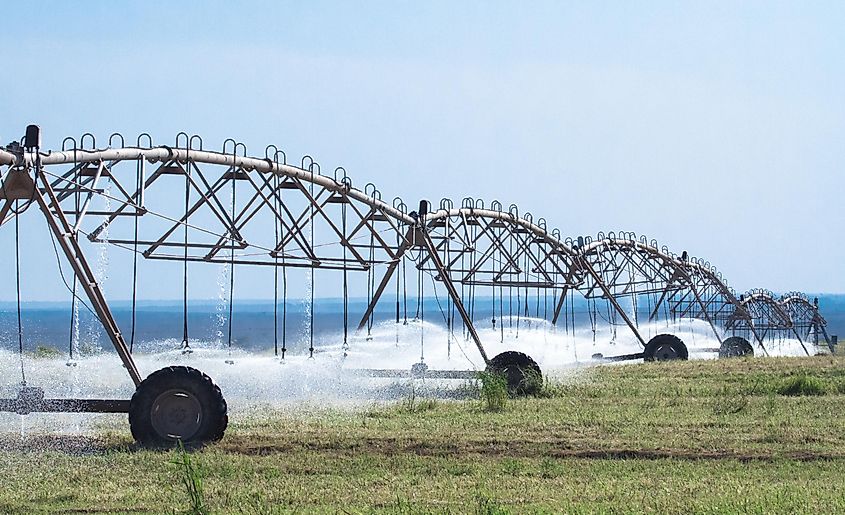
Being an arid country with only about 82 mm of annual rainfall, Qatar is naturally water-stressed. However, the booming oil and natural gas sector has allowed the country to grow rapidly in recent decades and invest in sophisticated technologies to extract water. Yet, the overconsumption and wastage of water in Qatar are concerning. The country has one of the world's highest domestic water usage rates, with an average of 430 liters of water consumed daily by a household! Also, a lot of water is utilized to keep the crops and plants in the country healthy to make up for the low precipitation rates. Qatar derives most of its water for agricultural use from groundwater aquifers, but the recharge rates are less than the water extraction rates, depleting the water levels in the aquifers and putting the country's water resources under extreme stress.
2. Israel - 4.82
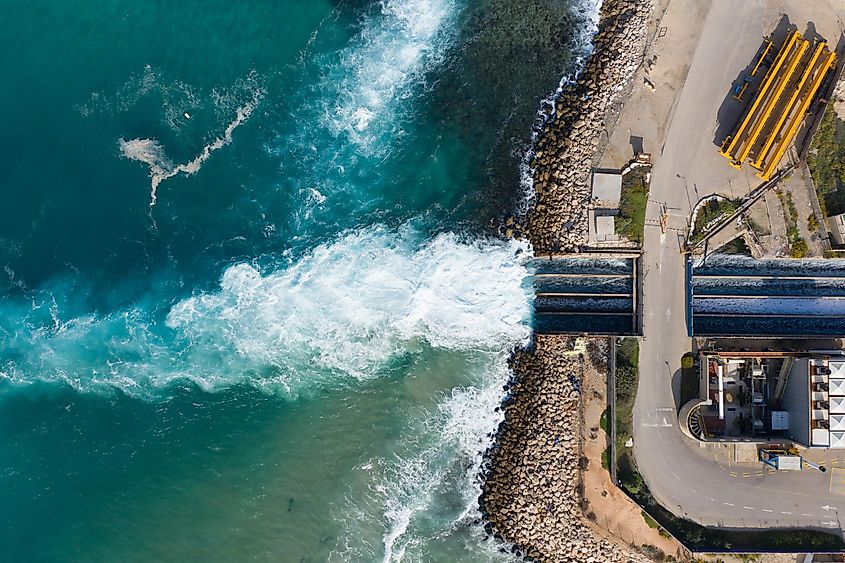
Israel has one of the world's best water management technologies and practices. The country produces nearly 85% of its drinkable water from seawater or brackish water via large-scale desalination. However, despite its sound water management, the country ranks high on the list of countries at risk of a water crisis. While Israel continues to innovate to ensure adequate water to its citizens, climate change and the extremely high demand to quench the thirst of a rapidly growing and developing nation are predicted to put the system under great stress. According to a scientific study, Isreal desalinated only 0.5 billion m3 of water in 2020. In 2065, this figure is expected to be as high as 3.7 billion m3 a year, demanding the construction of 30 new desalination units to cater to this need. It would also need an increase in electricity supply for the desalination plants. Thus, the coming decades will definitely be a challenge for the country in an era of climate change and other global environmental issues.
2. Lebanon - 4.82
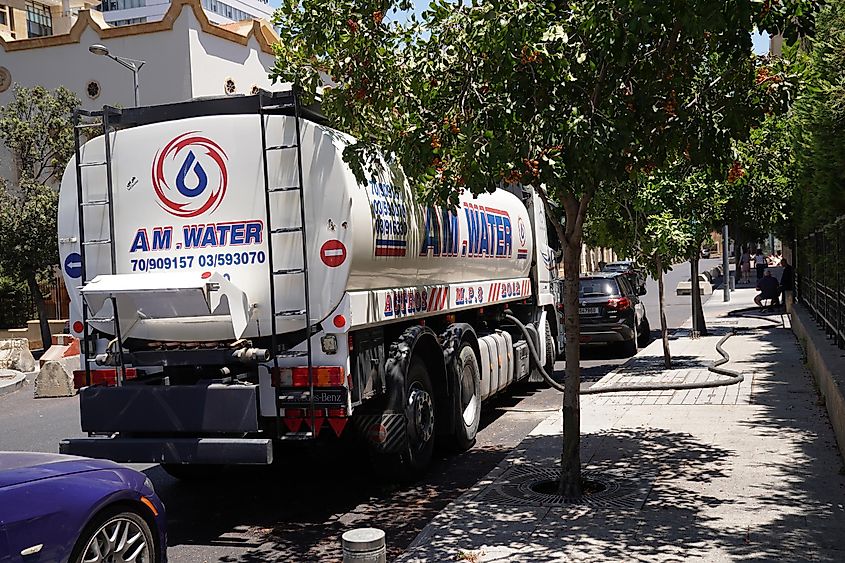
Another country in the Middle East, Lebanon, is currently facing a dire water crisis worsened by the economic downfall gripping the nation. As per UNICEF, about 70% of the country's population faces a critical water shortage. While in 2019, four liters of bottled water cost 1000 Lebanese pounds, today, the same sum can buy only one 500 ml bottle, an eight-fold increase in price. Lebanon also suffers from an inefficient national water management system with issues like a lack of maintenance and legal regulations, unaccounted water loss, and constant blackouts. Added to that is the influx of over 1.7 million Syrian refugees in the country, further heightening the water scarcity issue.
4. Iran 4.57
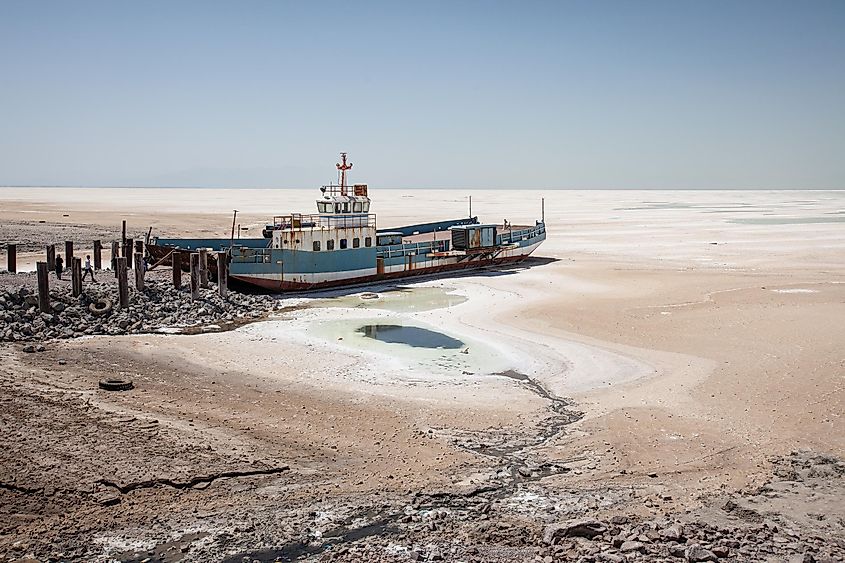
Numerous issues plague water availability in Iran, including low annual rainfall, poor rainfall and surface water distribution patterns, climate change, and economic and political instability in the country. In the past 20 years, Iran has lost over 200 cubic kilometers of its stored water, while groundwater levels have also dropped rapidly at an average rate of 28 cm per year. Surface water bodies across Iran, like Lake Urmia and marshlands of the Helmand basin, are fast disappearing due to increased droughts and desertification, and overuse of water. The shift from the use of the traditional qanat irrigation system to modern irrigational agriculture technologies has also led to the over-extraction of water. Also, 77% of the land in Iran is today suffering from an anthropogenic drought due to groundwater use three times more than the natural recharge rate.
5. Jordan 4.56
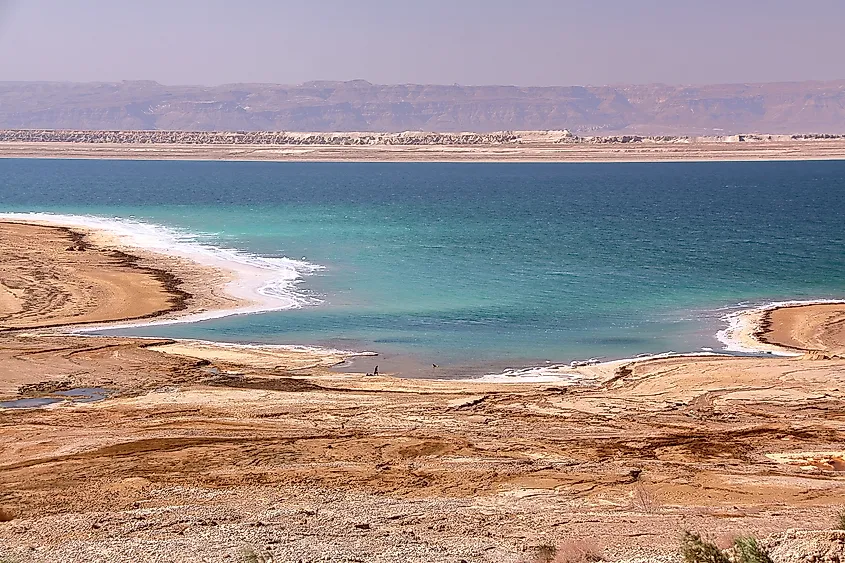
Jordan's water crisis is also as severe as that of its neighbors. The Jordan River is today running at less than 10% of its historical average. The Dead Sea, a major tourist attraction in the country, is also fast drying up as the rivers that feed it have a highly diminished supply. Many of these rivers are shared with Israel and Syria, diverting the waters upstream for their own use. With little opportunity to negotiate with these countries due to strained relations, Jordan has to rely on its groundwater aquifers to satisfy the thirst of its growing population. This situation has put severe stress on the aquifers, which are now drained at twice the rate at which they can be naturally replenished. With nearly 60% of Jordan's water supply coming from these overexploited aquifers and climate change further complicating the issue, Jordan faces major water scarcity in the near future.
6. Libya 4.55
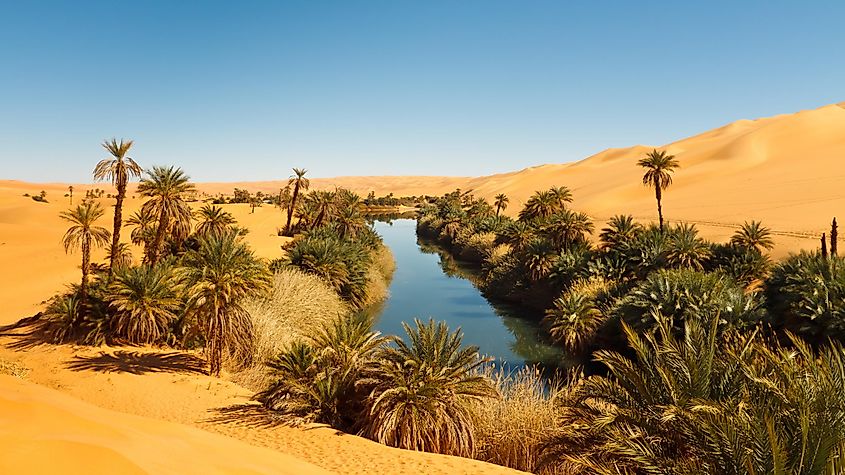
The North African country of Libya is the first from the continent on this list. Large parts of the country are covered by the vast Sahara Desert, receiving extremely poor rainfall. For decades, the Libyan population has depended on underground aquifers to quench their thirst. Four aquifers, Sirt, Hamada, Morzuk, and Kufra, supply freshwater to the country, the first of three of which are located in the Nubian Sandstone Aquifer and have been nearly emptied out due to high extraction levels not matching the replenishment rate. There is severe mismanagement of water resources in Libya which is wrought with many other challenges like significantly declined services, failing businesses and banking system.
7. Kuwait 4.43
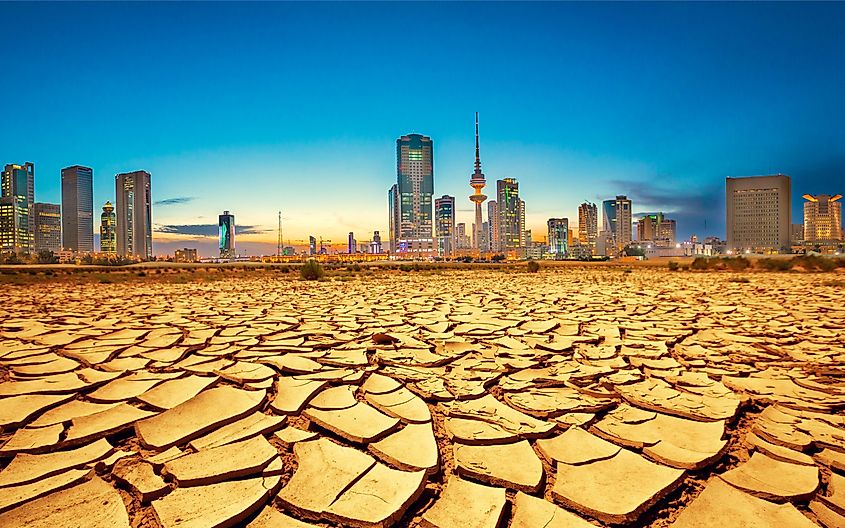
The rapidly urbanizing and growing country is struggling with acute water shortage. Despite being naturally water scarce, this oil-rich desert nation has utilized its wealth gained from fossil fuel exports to ensure a consistent water supply to its people and industries. However, underground aquifers in the country are now highly stressed and depleting fast, putting the agricultural and industrial sectors depending on this resource at risk. The growing population also demands an increasing number of desalination units to meet the need. Climate change and misuse of water further heighten the challenges facing Kuwait in the coming times.
8. Saudi Arabia - 4.35
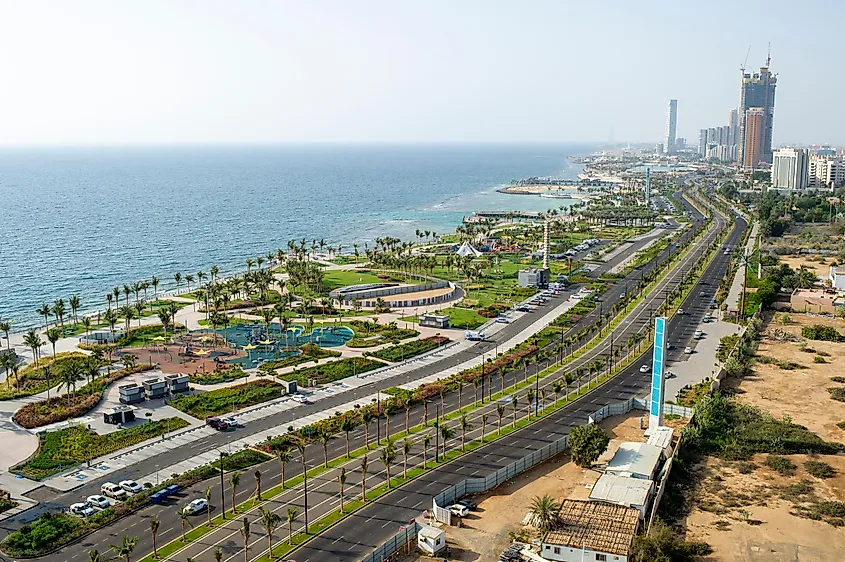
Although 99.84 % of Saudis have access to potable water, the demand is too high in one of the most water-scarce nations in the world. With the third-highest per capita freshwater consumption in the world, the desert kingdom is now producing more desalinated water than any other country, burning some 1.5 million barrels of crude oil in the process. While this oil-rich nation is wealthy enough to meet the current water demands of its citizens and industries, the depletion of fossil fuel deposits in the future could put the country in a challenging situation in the future and test its ecomomy to meet the water needs of the nation.
9. Eritrea - 4.33
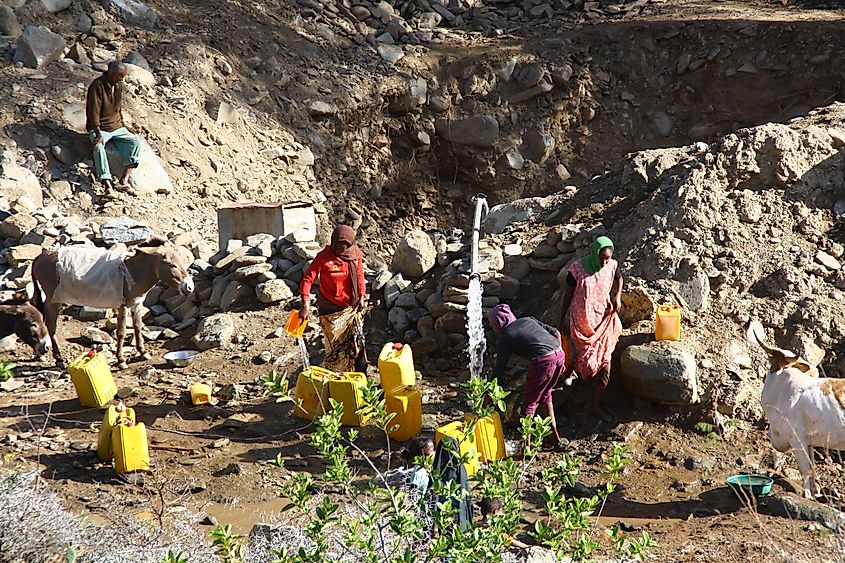
Rainfall highly varies throughout Eritrea, with a mean annual rainfall of only around 16-20 inches. Over 80% of Eritrea's impoverished population lack access to clean water for basic needs like cooking, bathing, and drinking. Many use rivers and streams at their own discretion and risk contamination, fatal diseases, and bowel infections from water-borne bacteria and viruses. Diarrhoeal disease in Eritrea is the leading cause of death in children under five years old. Added to all these issues is that of a heightened drought situation in the country which has dilapidated available water resources, further putting lives in the country at risk.
10. United Arab Emirates - 4.26
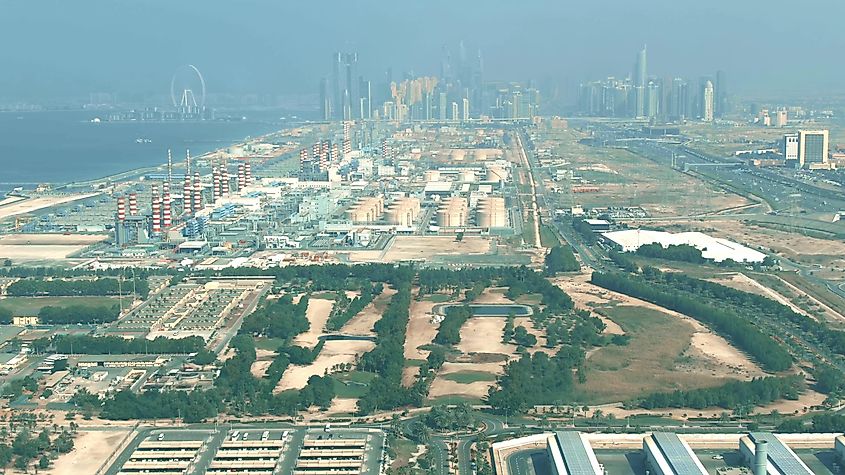
The highly developed and thriving nation of UAE in the Middle East is also not free of issues, especially one concerning its water resource sector. Like most of its neighbors, overuse plagues the country's available water resources. With little rainfall and surface water resources, this country depends on desalination and groundwater aquifers for its water needs. Over the past three decades, however, UAE's water table has dropped by one meter annually, and some experts have predicted that the country will run out of freshwater resources in the next 50 years. The country has devised the Water Security Strategy 2036 to meet the challenge. It aims to reduce the nation's water demand by 21% and increase water reuse.
As the world's human populations grow, so does the exploitation of the available natural resources, including the vital component of life- water. However, the overuse and contamination of water resources in the countries mentioned above are predicted to make this life-giving component a rare commodity to people living in these nations. The crisis is only going to get worse with climate change. Timely action, if not taken, will leave these countries and many others in the coming years severely dehydrated, causing civil unrest and forcing mass migrations of climate refugees from these countries in search of better living conditions in other countries.
The 50 Most Water-Stressed Countries In The World
| Rank | Country | Score | Risk Level | |
|---|---|---|---|---|
| 1 | Qatar | 4.97 | Extremely High | |
| 2 | Israel | 4.82 | Extremely High | |
| 2 | Lebanon | 4.82 | Extremely High | |
| 4 | Iran | 4.57 | Extremely High | |
| 5 | Jordan | 4.56 | Extremely High | |
| 6 | Libya | 4.55 | Extremely High | |
| 7 | Kuwait | 4.43 | Extremely High | |
| 8 | Saudi Arabia | 4.35 | Extremely High | |
| 9 | Eritrea | 4.33 | Extremely High | |
| 10 | United Arab Emirates | 4.26 | Extremely High | |
| 11 | San Marino | 4.14 | Extremely High | |
| 12 | Bahrain | 4.13 | Extremely High | |
| 13 | India | 4.12 | Extremely High | |
| 14 | Pakistan | 4.05 | Extremely High | |
| 15 | Turkmenistan | 4.04 | Extremely High | |
| 16 | Oman | 4.04 | Extremely High | |
| 17 | Botswana | 4.02 | Extremely High | |
| 18 | Chile | 3.98 | High | |
| 19 | Cyprus | 3.97 | High | |
| 20 | Yemen | 3.97 | High | |
| 21 | Andorra | 3.92 | High | |
| 22 | Morocco | 3.89 | High | |
| 23 | Belgium | 3.89 | High | |
| 24 | Mexico | 3.86 | High | |
| 25 | Uzbekistan | 3.82 | High | |
| 26 | Greece | 3.8 | High | |
| 27 | Afghanistan | 3.8 | High | |
| 28 | Spain | 3.74 | High | |
| 29 | Algeria | 3.69 | High | |
| 30 | Tunisia | 3.67 | High | |
| 31 | Syria | 3.64 | High | |
| 32 | Turkey | 3.56 | High | |
| 33 | Albania | 3.53 | High | |
| 34 | Armenia | 3.43 | High | |
| 35 | Burkina Faso | 3.42 | High | |
| 36 | Djibouti | 3.37 | High | |
| 37 | Namibia | 3.31 | High | |
| 38 | Kyrgyzstan | 3.31 | High | |
| 39 | Niger | 3.28 | High | |
| 40 | Nepal | 3.17 | High | |
| 41 | Portugal | 3.14 | High | |
| 42 | Iraq | 3.13 | High | |
| 43 | Egypt | 3.07 | High | |
| 44 | Italy | 3.01 | High | |
| 45 | Thailand | 2.98 | Medium-High | |
| 46 | Azerbaijan | 2.94 | Medium-High | |
| 47 | Sudan | 2.92 | Medium-High | |
| 48 | South Africa | 2.89 | Medium-High | |
| 49 | Luxembourg | 2.86 | Medium-High | |
| 50 | Australia | 2.67 | Medium-High |











